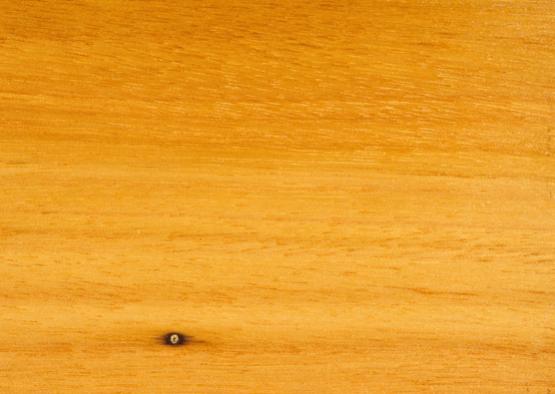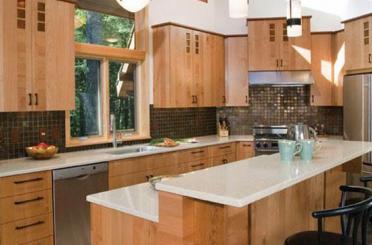White stringybark is an Australian native hardwood species. Its timber products are suitable for a wide range of applications, from general building to wharf and bridge construction, boat building, outdoor furniture and turnery.
Small-leaved Stringybark, Thin-leaved Stringybark, Wilkinson’s Stringybark, Pink Blackbutt
Eucalyptus eugenioides

White stringybark occurs along the coast and adjacent tablelands of New South Wales, extending north to Yarraman, Queensland, with isolated stands in the Carnarvon Range and Blackdown Tableland areas, and on elevated sites as far north as Cooktown. It is a medium-sized forest tree growing to 35 metres in height, with a stem diameter of up to one metre. The trunk is generally straight and of good form.
The heartwood of this species is light brown to pale pink in colour. Sapwood is paler but not always clearly distinguishable from the true wood. Grain is generally uniform and medium-textured, but occasional interlocking can produce attractive figure in some samples.
White stringybark is rated as a class 2 hardwood with an above ground life expectancy of up to 40 years, and an in ground life expectancy of between 15 and 25 years. It is not termite-resistant. Sapwood (but not heartwood) is readily impregnated with preservatives. White stringybark is not susceptible to lyctid borer (powder post beetle) attack.
Although White stringybark is a very hard timber (rated 1 on a 6-class scale), it machines and turns well, and is amenable to the use of standard fastenings and fittings. It readily accepts paint, stains and polish. As with most high-density species, machining and surface preparation should be done immediately prior to gluing.
The timber of this species is used across a range of applications. Sawn timber is used in wharf and bridge construction; as railway sleepers, cross-arms, poles, piles and mining timbers; and for general house framing and cladding, flooring and decking, linings and joinery. White stringybark is also used for fencing, landscaping and retaining walls. Other uses include outdoor furniture and turnery; boat, coach and carriage building; and structural plywood.
Shrinkage
| Very Low | Low | Medium | High | Very High | |
|---|---|---|---|---|---|

|

|

|
|||
Tangential : |
10.60%
|
||||
Radial : |
5.60%
|
||||
Unit Movement Tangential: |
0.36%
|
||||
Unit Movement Radial: |
0.25%
|
Strength Group

Very High |
High |
Reasonably High |
Medium High |
Medium |
Reasonably Low |
Low |
Very Low |
||
Unseasoned: |
S1 |
S2 |
S3 |
S4 |
S5 |
S6 |
S7 |
S8 |
|
|---|---|---|---|---|---|---|---|---|---|
 |
|||||||||
Seasoned: |
SD1 |
SD2 |
SD3 |
SD4 |
SD5 |
SD6 |
SD7 |
SD8 |
|
 |
Stress Grade

| Structural No. 1 |
Structural No. 2 |
Structural No. 3 |
Structural No. 4 |
Structural No. 5 |
|
Unseasoned: |
F17 |
F14 |
F11 |
F8 |
F7 |
Seasoned: |
F27 |
F22 |
F17 |
F14 |
F11 |
Density per Standard

Seasoned: |
855kg/m3
|
|---|---|
Unseasoned: |
1120kg/m3
|
Joint Group

Very High |
High |
Reasonably High |
Medium |
Low |
Very Low |
|
Unseasoned: |
J1 |
J2 |
J3 |
J4 |
J5 |
J6 |
|---|---|---|---|---|---|---|
 |
||||||
Seasoned: |
JD1 |
JD2 |
JD3 |
JD4 |
JD5 |
JD6 |
 |
Colour

| White, yellow, pale straw to light brown | Pink to pink brown | Light to dark red | Brown, chocolate, mottled or streaky | |
 |
||||
Mechanical Properties
Modulus of Rupture - Unseasoned: |
81
|
|---|---|
Modulus of Rupture - Seasoned: |
136
|
Modulus of Elasticity - Unseasoned: |
13.4
|
Modulus of Elasticity - Seasoned: |
17
|
Maximum Crushing Strength - Unseasoned:  |
44
|
Maximum Crushing Strength - Seasoned: |
75
|
Impact - Unseasoned: |
17.4
|
Impact - Seasoned: |
18.6
|
Toughness - Unseasoned: |
Medium - 15 - 24 Nm
|
Toughness - Seasoned: |
Medium - 15 - 24 Nm
|
Hardness - Unseasoned: |
6.4
|
Hardness - Seasoned: |
9
|
Durability
| Low | Moderate | Reasonably High | High | |
| (0 - 5 yrs) | (5 - 15 yrs) | (15 - 25 yrs) | (more than 25 yrs) | |
In-Ground: |
 |
|||
| (0 - 7 yrs) | (7 - 15 yrs) | (15 - 40 yrs) | (More than 40 yrs) | |
Above ground: |
 |
|||
| (0 - 20 yrs, usually < 5) | (21 - 40 yrs) | (41 - 64 yrs) | (More than 60 yrs) | |
Marine Borer Resistance: |
 |
Lyctid Borer Susceptibility: |
Not Susceptible |
|---|---|
Lyctid Borer Susceptibility - Other: |
|
Termite Resistance: |
Resistant
|
Fire Properties
| 1 - non-combustible | 2 - reasonably non-combustible | 3 - slightly combustible | 4 - combustible | |
Fire Properties Group |
Group Number - Other: |
3 if used on MDF or particleboard ≥12mm; veneer thickness 0.6-0.85mm
|
|---|---|
Average Specific Extinction Area: |
<250
|
Bushfire Resistance: |
BAL 12.5 and 19 – All AS3959 required applications
|
The heartwood of white stringybark is light brown, and occasionally pale pink in colour. Sapwood is paler in colour but not sharply differentiated. Grain is generally uniform and medium-textured, but occasional interlocking can produce attractive figure in some samples.
Timber from this species is used across a range of applications. Sawn timber is used in wharf and bridge construction; as railway sleepers, cross-arms, poles, piles and mining timbers; and for general house framing and cladding, flooring and decking, linings and joinery. It is also used for fencing, landscaping and retaining walls. Other uses include outdoor furniture and turnery; boat, coach and carriage building; and structural plywood.
White stringybark machines and turns well and can be used with standard fittings and fastenings. As with most high-density species, machining and surface preparation should be done immediately before gluing. White stringybark readily accepts paint, stains and polishes.

Joinery
Allied Forest Products

Australian Solar Timbers
Australian Timber

Coffs Harbour Hardwoods

Garde Timber Pty Ltd
Green Light Milling

Outlast Timber Supplies

Pentarch Forestry





